This is a preprint.
In mice, discrete odors can selectively promote the neurogenesis of sensory neuron subtypes that they stimulate
- PMID: 38405728
- PMCID: PMC10888860
- DOI: 10.1101/2024.02.10.579748
In mice, discrete odors can selectively promote the neurogenesis of sensory neuron subtypes that they stimulate
Update in
-
In mice, discrete odors can selectively promote the neurogenesis of sensory neuron subtypes that they stimulate.Elife. 2025 Jun 18;13:RP96152. doi: 10.7554/eLife.96152. Elife. 2025. PMID: 40531183 Free PMC article.
Abstract
In mammals, olfactory sensory neurons (OSNs) are born throughout life, ostensibly solely to replace neurons lost via turnover or injury. This assumption follows from the hypothesis that olfactory neurogenesis is stochastic with respect to neuron subtype, as defined by the single odorant receptor that each neural precursor stochastically chooses out of hundreds of possibilities. This assumption is challenged, however, by recent findings that the birthrates of a fraction of OSN subtypes are selectively reduced by olfactory deprivation. These findings raise questions about how, and why, olfactory stimuli are required to accelerate the neurogenesis rates of some subtypes, including whether the stimuli are specific (e.g., discrete odorants) or generic (e.g., broadly activating odors or mechanical stimuli). Based on previous findings that the exposure of mice to sex-specific odors can increase the representations of subtypes responsive to those odors, we hypothesized that the neurogenic stimuli comprise discrete odorants that selectively stimulate OSNs of the same subtypes whose birthrates are accelerated. In support of this, we have found, using scRNA-seq and subtype-specific OSN birthdating, that exposure to male and exogenous musk odors can accelerate the birthrates of subtypes responsive to those odors. These findings reveal that certain odor experiences can selectively 'amplify' specific OSN subtypes and suggest that persistent OSN neurogenesis serves, in part, an adaptive function.
Conflict of interest statement
Declaration of interests The authors declare no competing interests.
Figures
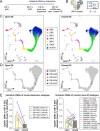




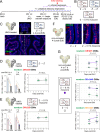

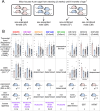
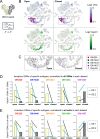
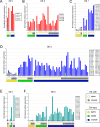


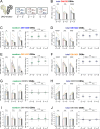

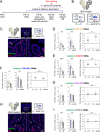
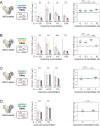
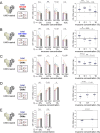

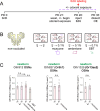
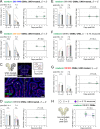
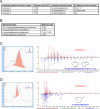

Similar articles
-
In mice, discrete odors can selectively promote the neurogenesis of sensory neuron subtypes that they stimulate.Elife. 2025 Jun 18;13:RP96152. doi: 10.7554/eLife.96152. Elife. 2025. PMID: 40531183 Free PMC article.
-
Regional deficits in endogenous regeneration of mouse olfactory sensory neuron axons.bioRxiv [Preprint]. 2025 May 6:2024.10.06.616907. doi: 10.1101/2024.10.06.616907. bioRxiv. 2025. PMID: 40492196 Free PMC article. Preprint.
-
A circuit supporting concentration-invariant odor perception in Drosophila.J Biol. 2009;8(1):9. doi: 10.1186/jbiol108. Epub 2009 Jan 26. J Biol. 2009. PMID: 19171076 Free PMC article.
-
Signs and symptoms to determine if a patient presenting in primary care or hospital outpatient settings has COVID-19.Cochrane Database Syst Rev. 2022 May 20;5(5):CD013665. doi: 10.1002/14651858.CD013665.pub3. Cochrane Database Syst Rev. 2022. PMID: 35593186 Free PMC article.
-
Factors that influence parents' and informal caregivers' views and practices regarding routine childhood vaccination: a qualitative evidence synthesis.Cochrane Database Syst Rev. 2021 Oct 27;10(10):CD013265. doi: 10.1002/14651858.CD013265.pub2. Cochrane Database Syst Rev. 2021. PMID: 34706066 Free PMC article.
Cited by
-
Role of iRhom2 in Olfaction: Implications for Odorant Receptor Regulation and Activity-Dependent Adaptation.Int J Mol Sci. 2024 May 31;25(11):6079. doi: 10.3390/ijms25116079. Int J Mol Sci. 2024. PMID: 38892263 Free PMC article.
References
-
- Imai T. Development of the Olfactory System. Evol. Neurosensory Cells Syst. 1st ed. Boca Raton: CRC Press; 2022. p. 29–60.
Publication types
Grants and funding
LinkOut - more resources
Full Text Sources
